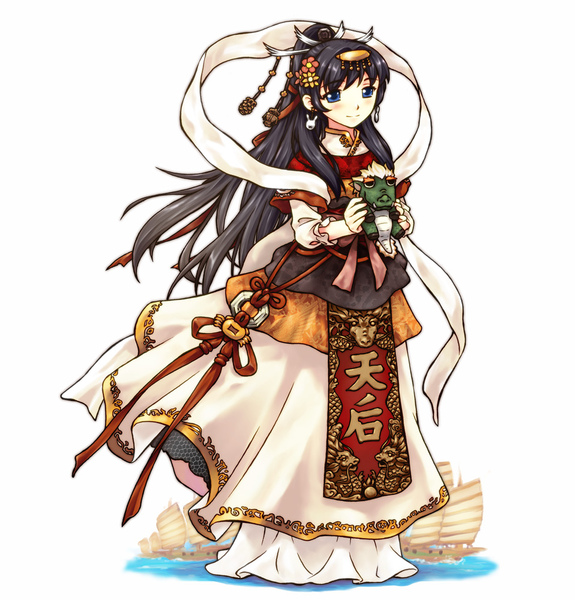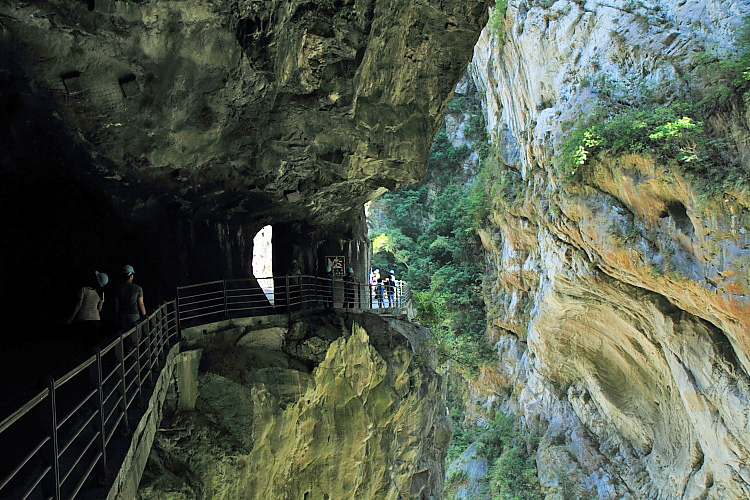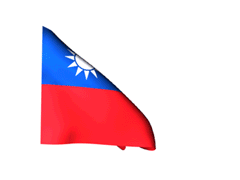[10 october] Happy National Day Taiwan(RoC)!
 •
by
•
by VampireA
General information
Population : 23,5 milion people (53rd in the World,23rd in Asia)
Total Area : 36,197 km^2 (134th in the World,39th in Asia)
Official languages : Mandarin
Official currency : New Taiwan dollar(NT$)
Capital : Taipei
Population density : 650 people/km^2 (17th in the World,7th in Asia)
Top 5 biggest cities : New Taipei, Taichung, Kaohsiung, Taipei, Taoyuan
The government of the Republic of China was founded on the Constitution of the ROC and its Three Principles of the People, which states that the ROC "shall be a democratic republic of the people, to be governed by the people and for the people." The government is divided into five branches (Yuan): the Executive Yuan (cabinet), the Legislative Yuan (Congress or Parliament), the Judicial Yuan, the Control Yuan (audit agency), and the Examination Yuan (civil service examination agency). The constitution was drafted before the fall of mainland China to the Communist Party of China.
When the ROC retreated to Taiwan in 1949, its claimed territory consisted of 35 provinces, 12 special municipalities, 1 special administrative region and 2 autonomous regions. However, since its retreat, the ROC has controlled only Taiwan Province and some islands of Fujian Province. The ROC also controls the Pratas Islands and Taiping Island in the Spratly Islands, which are part of the disputed South China Sea Islands. They were placed under Kaohsiung administration after the retreat to Taiwan.
Since 1949, the government has made some changes in the area under its control. Taipei became a special municipality in 1967 and Kaohsiung in 1979. The two provincial governments were "streamlined", with their functions transferred to the central government (Fujian in 1956 and Taiwan in 199
😎. In 2010, New Taipei, Taichung and Tainan were upgraded to special municipalities. And in 2014, Taoyuan County was also upgraded to Taoyuan special municipality. This brought the top-level divisions to their current state:


National sport : Baseball

National animal : Formosan black bear (Ursus thibetanus formosanus)

National bird : Formosan Blue Magpie (Urocissa caerulea)

National Flower : Plum blossom (Prunus mume)


The significance of the 10th of October
The National Day of the Taiwan, also referred to as Double Ten Day or Double Tenth Day, is the national day of the Republic of China (ROC). It commemorates the start of the Wuchang Uprising of October 10, 1911 (10-10 or double ten), which led to the collapse of the Qing Dynasty in China and establishment of the ROC on January 1, 1912.
During the course of the Chinese Civil War, the government of the Republic of China lost control of mainland China, fleeing to Taiwan Island in December 1949. The National Day is now mainly celebrated in ROC-controlled Taiwan, but is also celebrated by some overseas Chinese.



Mythology time, hope you are all prepared. We say island , we thing about sea and fishing so let’s talk a little about…

Mazu, also known as Matsu, is a popular Taoist and Chinese Buddhist goddess. She is the goddess and patroness of the sea. She is believed to protect fisherman and sailors. Mazu is widely worshiped in southern China, Vietnam, Taiwan, Zhejiang, Fuijian, Guangdong and Hainan. She is popularly known as Empress of Heaven and Holy Mother Empress of Heaven. Her other popular titles are Holy Mother Empress of the Heavens above, Heavenly Imperial Concubine, Lady Mazu, Heavenly Princess consort and Heavenly Holy Mother.
Mazu was born on March 23, 906. According to legend because she did not cry when she was born, so she was named Lin Moniang which means Silent girl or silent young female. She had a mysterious ability to predict weather and often she warned others to not make journeys to the sea. She became a very good swimmer and would often rescue people from the sea even in the harshest weather. There are at least 2 versions of her death. One legend tells that Mazu went out into the sea during a storm to try to find her lost father. Hours passed but still she could not find her father and later died of exhaustion. Another legend tells that Mazu climbed a mountain alone and flew into the heavens and became a goddess. (if you ask me, I preffer the 2nd legend.
After her death, her family and many other families of sailors and fishermen started to pray for her heroic acts to try to save those at sea. Soon her worship spread quickly to other parts of Asia. Starting from Fuijian, worship of Mazu spread to neighboring coastal provinces of Zhejiang and Guandong, and thence to all coastal areas of mainland China. Later, due to Chinese immigrants, the worship of Mazu further spread to Taiwan, Vietnam, Japan, Ryuku Islands, and parts of Southeast Asia. Many people soon began to build temples dedicated to Mazu all over the world.
The most famous festival is the "inspection tour" of a Mazu idol from the Zhenlan Temple in Taichung to Chaotian Temple in Beigang and back to Zhenlan Temple again, over 1,000,000 people joined this festival every year. It's on March of the Chinese lunar calendar every year, which was the birthday of Mazu, and takes 9 days to walk around 250km, every one can join it, and it has free food for all tour.
I am sure if you want, you can find more about this subject.

Top 5 visited places by tourists
Taipei 101

The Taipei 101 / TAIPEI 101, formerly known as the Taipei World Financial Center – is a landmark supertall skyscraper in Xinyi District, Taipei, Taiwan. The building was officially classified as the world's tallest in 2004, and remained such until the completion of the Burj Khalifa in Dubai in 2010. In 2011, the building was awarded the LEED platinum certification, the highest award according to the Leadership in Energy and Environmental Design (LEED) rating system, and became the tallest and largest green building in the world.
National Palace museum


The National Palace Museum, located in Taipei and Taibao, Taiwan, has a permanent collection of nearly 700,000 pieces of ancient Chinese imperial artifacts and artworks, making it one of the largest of its type in the world.
Taroko National park




Taroko National Park is one of the nine national parks in Taiwan and was named after the Taroko Gorge, the landmark gorge of the park carved by the Liwu River. The park spans Taichung Municipality, Nantou County, and Hualien County.
Sun Moon Lake



Sun Moon Lake is in the foothills of Taiwan’s Central Mountain Range. It’s surrounded by forested peaks and has foot trails. East of the lake, the Formosan Aboriginal Culture Village is a theme park with a section devoted to re-created indigenous villages. Displays here include centuries-old carved lintel pieces, handicrafts and weapons. The Sun Moon Lake Ropeway cable car offers views of the mountains and water.
Kenting National park



Kenting National Park , commonly known as Kenting , is a national park located on the Hengchun Peninsula of Pingtung County, Taiwan, covering Hengchun, Checheng, and Manzhou Townships. Established on January 1, 1984, it is Taiwan's oldest and southernmost national park, covering the southernmost area of the Taiwan island along Bashi Channel. Administered by the Executive Yuan's Ministry of the Interior, this national park is well known for its tropical climate and sunshine, scenic mountain and beach, the Spring Scream rock-band festival held in every March, and has long been one of the most popular tourist destinations in Taiwan with 5.84 million visitors in 2016.

Top 3 locations suggested by the locals
Hualien-Mukumugi


Mukumugi is one of the private spots in Hualien, featuring for its beautiful stream as well as aboriginal culture. The Qingshui Stream flows through the valley, forming lots of deep pool with clear water and grotesque stone. You can swim in the clean and clear water or enjoy “ pool jumping ”, which is a popular activity among the aboriginal children. Moreover, by visiting several vendor hold by local tribe people, you can experience indigenous culture and enjoy the local delicacies.
Chiaming Lake


The Chiaming Lake is a lake in Haiduan Township, Taitung County, Taiwan. It is the second highest lake area in Taiwan. In Bunun language, Chiaming Lake is called "cidanumas buan", meaning "Mirror of the moon"; in Taiwan, it is traditionally referred as [/b]"Angel's teardrop" or, due to its deep blue color, "God's lost sapphire"[/b].
Jiufen


Jiufen is a mountain town in northeastern Taiwan, east of Taipei. It's known for the narrow alleyways of its old town, packed with teahouses, street-food shacks and souvenir shops. Near central Old Street is the Shengping Theater, established in the 1900s and since restored. Close by, the Gold Mine Museum traces the town's history as a mining hub during the Japanese-era gold rush.

Inventions Taiwan(RoC) gave to the world
*Instant noodles!

*Bubble tea!

*Woodball!

*Xiaoluren!

*The walking little green light man!
*Connect6!


Famous people from Taiwan(RoC)
Chin-Feng Chen - is a baseball outfielder who was the first Taiwan-born player playing in Major League Baseball in 2002
(born 1977)
Terry Gou - is a Taiwanese tycoon who is the founder and chairman of Foxconn, the world's largest contract manufacturer of electronics, with factories in several countries, mostly in mainland China where it employs 1.2 million people and is its largest private employer and exporter.
(born 1950)
Ang Lee - is a Taiwanese film director, screenwriter and producer. Lee's earlier films, such as The Wedding Banquet, Pushing Hands, and Eat Drink Man Woman explored the relationships and conflicts between tradition and modernity, Eastern and Western. Lee also deals with repressed, hidden emotions in many of his films, including Crouching Tiger, Hidden Dragon, The Ice Storm, Hulk and Life of Pi. Lee's work is known for its emotional charge, which critics believe is responsible for his success in offsetting cultural barriers and achieving international recognition.
(born 1954)
Morris Chang - is a Taiwanese American businessman, and the founder, chairman and CEO of Taiwan Semiconductor Manufacturing Company, the world's first and largest silicon foundry. He is known as the semiconductor industry founder of Taiwan.
(born 1931)
Jay Chou - is a Taiwanese musician, singer, songwriter, record producer, film producer, actor and director. Chou debuted his acting career in the film Initial D (2005); followed shortly by a starring role in the epic Curse Of The Golden Flower (2006). He has since starred in a number of films, becoming known to western audiences when he made his Hollywood debut in 2011 with The Green Hornet, starring alongside Seth Rogen and Christoph Waltz. Chou also manages his own record and management company JVR Music. In 2016, he made an appearance in the Hollywood film Now You See Me 2.
(born 1979)

Traditional food
Braised Pork Over Rice

A good bowl of lurou fan features finely chopped, not quite minced, pork belly, slow-cooked in aromatic soy sauce with five spices. There should be an ample amount of fattiness, in which lies the magic. The meat is spooned over hot rice. A little sweet, a little salty, braised pork rice is comfort food perfected.
Oyster omelette

The eggs are the perfect foil for the little oysters, which are easily found around the island, while sweet potato starch is added to give the whole thing a gooey chewiness -- a signature Taiwan food texture.
Taiwanese fried chicken

The chicken is chopped into bite-sized pieces, marinated, dipped in batter and deep-fried. A generous sprinkling of salt, pepper and deep fried basil complete the morsels.
Xiaolongbao

Their paper-thin wrappings hold rich hot broth and tender pork meatballs.
Stincky tofu

If you hold your nose, it looks and tastes just like a plain ol' piece of fried tofu, with a crisp casing and soft pudding-like center. But what's the fun in eating that? Inhale deeply and relish the stench. The smellier, the better.
Pan-fried buns

The buns are made with spongy white Chinese bread that's pan-fried on the bottom. Break one open and you reveal a moist, porky filling. A Shanghainese staple, the Taiwanese version differs in two ways: it's slightly bigger and it hits the pan upside-down.
Gua bao

A steamed bun sandwiches a hearty filling of braised pork belly, pickled Chinese cabbage and powdered peanuts. The filling is chopped into small pieces and mixed together so there's a bit of everything in every bite.
Traditional deserts
Pig Blood Cake

This mix of pig's blood and sticky rice is stuck on the end of a stick like a lollipop. For the final Taiwanese touch, the pudding is coated in a sweet peanut powder.
Pineapple cake

This iconic Taiwanese pastry -- mini-pies filled with candied pineapple -- is one of Taiwan's best food souvenirs, filled with a mix of pineapple and chewable bits of winter melon. They have a fruity sweetness and a golden casing of crumbly, buttery pastry
Shaved ice mountain

A pile of shaved ice is heaped with fresh fruit and flavorings, such as mango pieces, juice and sweet condensed milk.
Aiyu jelly

Wobbly and fairly tasteless, aiyu jelly takes on the flavor of whatever it's eaten with. You can add it to lemonade and shaved ice for a refreshing summer drink. The jelly gives the liquid a fun gloopy texture.
Douhua

Douhua is the short form of doufuhua. It is a Chinese snack made with very soft tofu. It is also referred to as tofu pudding and soybean pudding.
Traditional drinks
Bubble tea

Most bubble tea recipes contain a tea base mixed/shaken with fruit or milk, to which chewy tapioca balls (known as bubbles, pearls, or boba) and fruit jelly are often added.
Kaoliang

Kaoliang, Gaoliangjiu or sorghum wine is a strong distilled liquor of Chinese origin made from fermented sorghum. It is a type of unflavoured baijiu. The liquor originates from Dazhigu, first appearing in the Ming Dynasty.

Interesting facts about Taiwan(RoC):
1.Everybody works hard all the time. Kids study so much that they have the world’s best math scores. Most people love to work, and they are at their jobs up to 70 hours per week. This is also a high-IQ area of the world.
2.Politeness, honor and respect for elders is of major concern in this culture.
3.It takes roughly eight hours to drive around the whole island.
4.Many students wear school uniforms. They are comfortable, athletic looking and have a fluorescent colour to them.
5.You can’t eat or drink, not even chew gum on the metro in Taiwan. If you have a piece of gum in your mouth, don’t chew or you may get fined.

My 5 words when I hear about Taiwan:
#BubbleTea,#electronics,#island,#math,#economics
What are your 5?

Special thanks to Chen G and the eTaiwanese community and a message for the comunity:
Waiting for feedback , comments , opinions and if there is anyone that thinks I missed something , I could do something better or just wants to help me with this project , PM me !
Special thanks to Kariky for the spacers !!
Hope you enjoyed and see you next time!
P.S. Article 19/74!



















P.S.2. Don't forget to push the flags !



Comments
right on
Great as always! Just correct "10 interesint facts about GERMANY" 😇
Thx, did it, was almost sure I didn't forgot to change that 🙂
Great
o/
Welcome to Taiwan!
\o/
welocome to taiwan
o7
07
V
Happy National Day Taiwan! o/
Chen G is one of my few friends from Taiwan.
Informative article with great photos, got to know that baseball is Taiwans' national sport after reading this article.
My 5 words when I hear about Taiwan:
#Xiaolongbao, #Taiwanese fried chicken, #Pan-fried buns,#Hualien-Mukumugi,#Chiaming Lake
Formosan black bear looks like the inspiration to this Manchester United shirt
http://www.whoateallthepies.tv/prd_maxzoom_mufc-55671.jpg
hi my friend
Chen G is a taiwanese dog, not really a citizen so... 😃
good place
u forgot the champions of Leauge of Legends
team TPA Taipei Assassins they won season 2 world championship
\TPA/ \TPA/
Hehe.. 1st worlds I seen
i have seen all of them bcs i was a lol player i played that game too much but now its enough
o7
Vote
Welcome to Taiwan!
nice !
V+S+C
😉
https://www.erepublik.com/en/article/doktorat-bugarske-istoricarke-teodore-toleve-2652819/1/20
😉
Happy National Day Taiwan \o/
One bubble tea for me please ❤
[removed]
Maybe in a few years.
I have too long trip list 😃
me too
i hope trip in the word
V
nice article 🙂
Happy National Day to Taiwan lol
V+S
Thanks 🙂
love this so much ❤33
love it
V+S o7
Nice
V+S 謝謝
V
V nice article
Vote 🙂
v
Taiwan is not a nation, Plato is just sore about PRC.
o/
v
Taiwan is NO.1 !!!!
v83
什麼時候才可以跟中國組成中華聯邦呢 xd
V
NICE!!
V + S
GOOD
v+s
o7